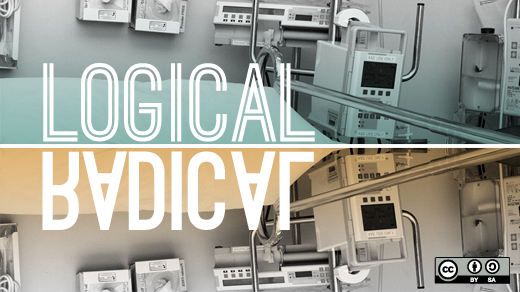I recently had the opportunity to speak with Jim Whitehurst, Red Hat CEO and author of The Open Organization, about his book. Because I also believe that a healthy culture is at the cornerstone of a successful business, Jim and I share a lot of the same philosophies, and he helped me see more clearly that the concept of an open organization is the model that drives employee engagement, growth, and continued improvement.
Our conversation focused specifically on how the ideas in his book apply to entrepreneurial and “main street” businesses, which describes my own business, Jetco Delivery, a freight and logistics company based in Houston, Texas. Business books too often contain great ideas, but the ideas can be very difficult for many companies to integrate. Talking with Jim about his concepts and The Open Organization was refreshing. Red Hat's business model is the blue print for the future company, regardless of an organization's size.
Bring your front-lines in
Employee passion and engagement is essentially what leads to customer satisfaction, and the traditional “top down” business model, centered around hierarchy and dictating from the top, is out-of-date. I can admit that the trucking industry (and many other “old economy” businesses) is often behind when it comes to this kind of thinking. Many times, employees are siloed—you are either an office employee or a driver—and the two rarely interact in meetings or when it comes to making decisions for the company as a whole.
I can attest that open organization concepts helped in transforming our business. Our drivers are our front lines, therefore making them the eyes and ears of our company. So it's essential that they are part of our decision-making, bring us their ideas, and know that they are included in what happens at the company. In 2013, we created a Driver Committee, which consists of drivers elected by their peers. Of course we had our share of naysayers who believed that what we were actually creating was a union. Call it what you want, but it's one of the best decisions we've made. A representative from our Driver Committee is now present at every management and operations meeting, and we've essentially torn down the silos. Jim's concept of an open organization works: No matter the size of the company or the industry, and from my own experiences, it is essential to employee-engagement and ownership.
An office filled with millennials
According to Jim, “The majority of millennials do not want to work for large companies.” In his view, the large company is not the problem; rather, the problem is hierarchy. I can tell you that the trucking industry is not necessarily the most attractive industry to join. Yet, when I look around our office, it is full of millennials, and they're continuing to walk through our door in search of applications. Why? Culture. We have built an all-inclusive, leadership-driven, employee-owned culture, and that's what millennials are after. Business leaders who want to succeed in hiring the best, young candidates will adapt their business structure over time to accommodate unprecedented demand for meaning, flexibility, and engagement in their work.
The 20/60/20 rule
Part of my conversation with Jim focused around the fact that we've both experienced attrition when it comes to implementing fundamental change. Attrition must be expected, and it's what allows you to weed out those who are not on board and in-line with your values. Jim shared that when he led Delta Air Lines through restructuring, his team was required to sign a "Count Me In" agreement, which established the behaviors expected or offered a severance package for those who would not sign. About 20 percent of Jim's team left during the restructuring. I've gone through the same process and like to refer to it as the 20/60/20 Rule. When you begin to embark on change, 20 percent of your team is going to be on board; they see where you're going and they are in support of and trust you. Sixty percent may not be sure about the change, but they are open-minded. As leaders, our job is to win these 60 percent over. The final 20 percent are not on board, and they never will be. For those 20 percent, your job as a leader is to provide them with a smooth transition out of the company. We must work for the 80 percent. Those are our employees who support our culture, who understand the reason for change, and who will work to make the company the best it can be.
Your culture will dictate who stays and who goes
Jim talked with me about old-line thinking that leadership must weed out the bottom 10 percent of employees each year. We agreed that the company's culture will eliminate those particular employees. I can admit that in the past, there have been times when I brought in hired guns to fill a particular need at my company. Although the actual need initially may have been fulfilled, these employees often haven't lasted, particularly when they are not in-line with our culture. An entrepreneurial company will groom leadership around its culture, not the other way around. Hire for values and cultural alignment; the technical skills can be taught.
My conversation with Jim reiterated my belief that a healthy company culture is the foundation of a successful business, and, as leaders, we must be prepared for change and healthy growth while creating a team of empowered employees. I am grateful to have learned from Jim and The Open Organization.
Follow the conversation on Twitter #theopenorg






Comments are closed.